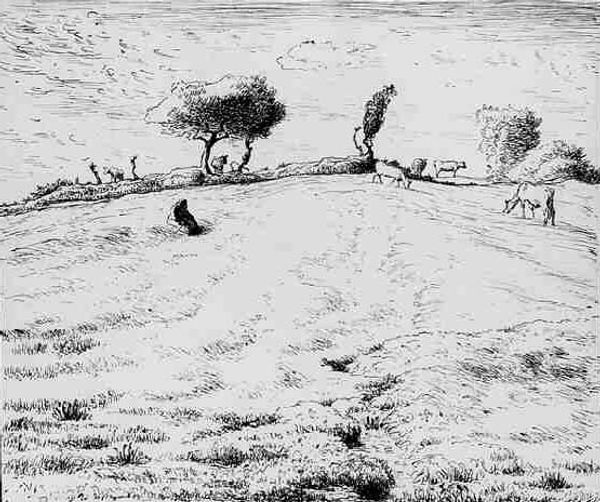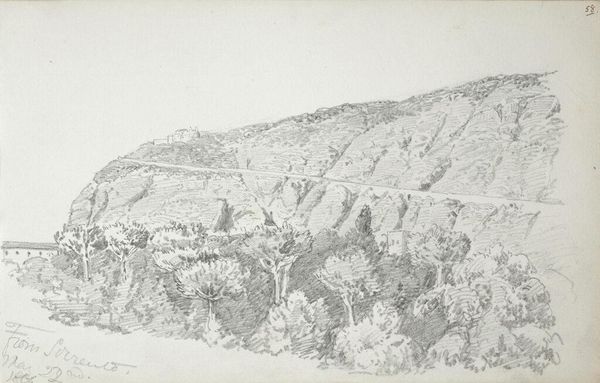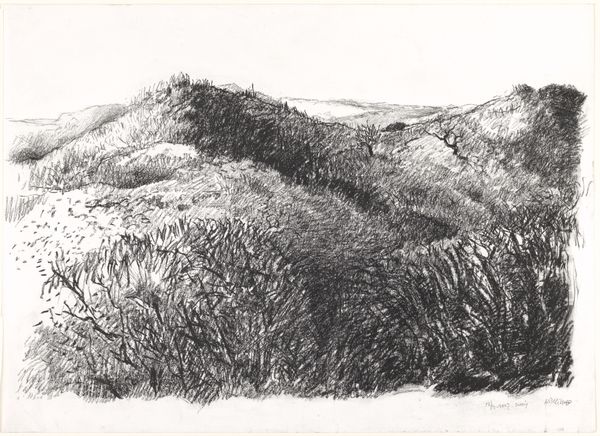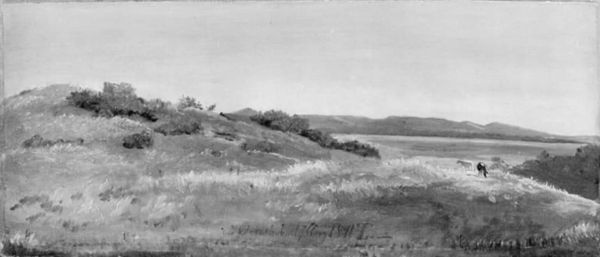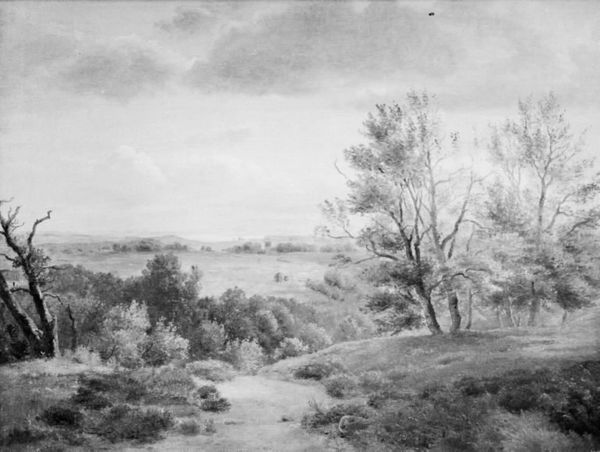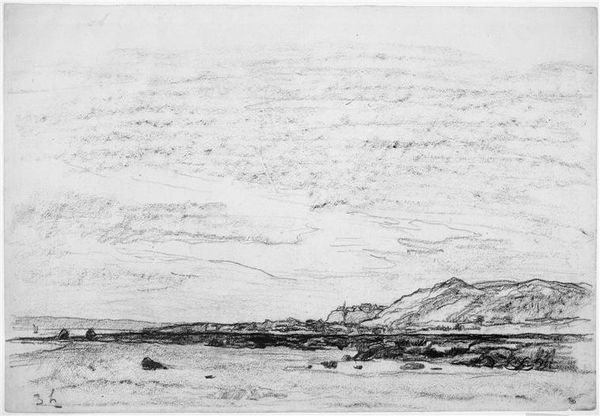
drawing, pencil, charcoal
#
pencil drawn
#
drawing
#
pencil sketch
#
landscape
#
charcoal drawing
#
charcoal art
#
pencil drawing
#
pencil
#
charcoal
#
charcoal
#
graphite
#
realism
Dimensions: 80.5 cm (height) x 62 cm (width) (Netto)
Curator: So, what grabs you about this charcoal drawing, “Coastal Landscape with a Headland” by Viggo Pedersen, created between 1891 and 1892? Editor: Well, right away I notice this…almost turbulent energy in the foreground contrasted with the calmness of the ocean. It's compelling how the materials create such texture. What strikes you when you look at it? Curator: It’s precisely that tension in materials and their handling that captivates me. Consider the labor invested: the sourcing of charcoal or graphite, its transformation into a drawing implement, and the artist’s deliberate, repeated strokes to build this landscape. Does that change your understanding? Editor: I see what you mean. Thinking about the time and effort, especially with such a simple medium, emphasizes the artist's connection to the land, and makes me reconsider what at first seemed simple. How do you think the materials themselves play into the historical context? Curator: The choice of humble materials like charcoal and pencil, versus, say, oil paint, might be a conscious decision. Perhaps Pedersen sought to depict the landscape through a medium accessible to a wider audience, connecting to notions of labor and lived experience, especially relevant in the rapidly industrializing late 19th century. It is a turn toward the democratized production of art. Does that reading seem far fetched? Editor: No, that’s really insightful! The rawness of the charcoal suddenly feels deliberate, not just a limitation. I didn’t see that at all. Curator: Thinking about art through the lens of materials and labor shifts our focus. It challenges the idea of the artist as a singular genius, highlighting the collaborative processes and social contexts embedded in even the simplest of drawings. Editor: I agree! Looking at the process behind the work gives so much additional information. Curator: Indeed. By questioning how art is made and consumed, we engage in a deeper understanding of art's place in society and culture. That’s quite rewarding.
Comments
No comments
Be the first to comment and join the conversation on the ultimate creative platform.


